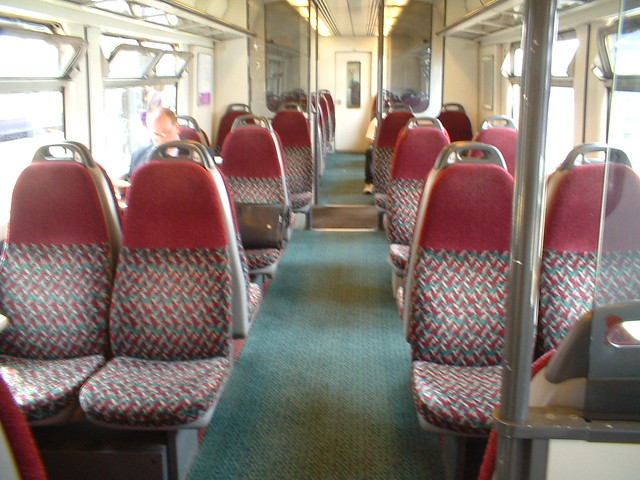Sorry but weight is very very relevant indeed. There's a document showing the tonnage the core will take on a daily basis, day in, day out, and its massive amount. Simply put weight is an issue as it as it increases, the the life of track reduces and core closures to replace the track increase.
I was rather under the impression that the emphasis had been on reducing the weight of Class 700 units to allow effective acceleration. This is what I was told at the Excel event by at least two members of staff on hand. Nonetheless, I also agree this is good for the track. It is just a pity that a few useful ideas, including one or two I have mentioned on the thread, couldn't be considered - for example, replacing conventional tables in Standard Class with cup holders (which could be made out of a fairly lightweight material) rather than a stark "nothing". Seats might not necessarily need armrests, but increased padding on the sides of the seat backs could help to delineate them, rather than flatter surfaces. And I feel some sympathy with those who suggest legroom could be improved by removing a couple of seats from each coach. This might make it quicker for people to stand up and move out of their seats anyway.
I know electrical socket installations can actually weigh a fair bit, when it comes to all the cabling and equipment to make supplies safe for each and every socket, but perhaps a wifi installation could be included as maybe it could be lighter. That said, if 3G/4G signal was improved in the TL Core section and in tunnels, I can see no reason why people couldn't opt for that instead.
I guess the real issue with the physical load on the TL Core tracks is that the effects cannot be as easily mitigated with the 24 hour running as, say, they would be if the line was operated like the ELL, with intensively-run daytime services but also overnight closures coupled with quite a few weekend blocks per year.
As for dwell time, whilst a lot of work has gone into mitigating this, I think the service (especially whilst timetables settle into place) could be confusing and tourists may also have to take a moment to work out where they are, so perhaps the greatest risk is not the provision of tray-tables but actually dithering customers - that's not to say they're particularly to blame, but just a fact of life. Remember that St Pancras is a key infrastructure hub for serving tourists, and the other stations will potentially be used by many business customers who are unfamiliar with the area (probably exactly as today, if not rather more so).


